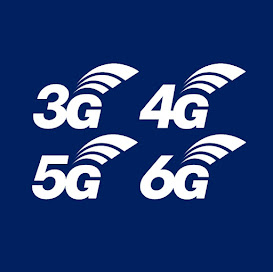 Nokia Home Control Center - My home is where my phone is
Nokia Home Control Center - My home is where my phone is Nokia Home Control Center is a solution based on an open Linux based platform enabling the home owner to build a technology-neutral smart home that can be controlled with a mobile phone, using a unified user interface. Nokia Home Control Center supports the most common smart home technologies, including Z-Wave as well as enabling the incorporation for proprietary technologies. Thus, it allows third parties to develop their own solutions and services on top of the platform, expanding the system to support new services and smart home technologies.
Building blocks for an intelligent house are readily available in the market. Putting it all together is, however, like trying to build a house from blocks that do not fit with each other. There are smart refrigerators, energy-saving washing machines, heating systems that can adjust the room temperature with one-celcius-accuracy, security systems with touchpanels, low-energy walls, programmable thermostats, self-adjusting curtains, configurable set-top boxes, self-operating yard lights and much more. The problem is all these systems are separate and you end up having a dozen remote controllers and miles of cables in the living room.
Until now, solutions to home automation challenges have been sought through the development of better sensor networks. Although they are, of course, very important parts of new smart home solutions, no single sensor network technology can solve the challenges in this field. Z-Wave, ZigBee, and KNX are all attempts to define a common command language for home networks. So far, there has not been a clear winner in the battle for the de facto standard of home networks. Hence, it can be assumed that a future home will use several different technologies.
The Nokia Home Control Center acts as a dictionary that translates different technological languages so that they can be presented in a unified user interface. Furthermore, the platform enables grouping different physical devices, even from different manufacturers, to be presented for the user in an easy-to-understand way.
The whole Nokia solution consists of four main components:
1. The heart of the solution is the Nokia Home Control Center which is built on top of standard gateway architecture.
2. Two most important control nodes are the mobile phone and web browser.
3. The back-end server architecture ensures a seamless and secure link between a mobile device and the home gateway and also makes possible updating and upgrading software easily.
4. The partner devices. In addition to the components that Nokia is providing, the value for the end customer comes from the integration of different third party devices and systems under the control of one user interface.
It will be possible for example to monitor and control electricity usage, to swich devices on and off, and monitor different objects, such as temperature, camera, and motion. On one hand, Nokia Home Control Center can be used as WLAN gateway. On the other hand, the platform covers everything from a basic security solution to a more sophisticated heating control system. Users are free to build a solution that fits to their needs and expand it when ever they want.
Mobility is becoming increasingly important in home environments, as wireless technologies for smart home solutions are emerging. As structure wiring is no longer required, these are no longer niche market products meant for new houses. Wireless broadband has become main stream and multimedia consumption over home networks is increasing. From many studies we know that moving from a multimedia network to a smart home network is a much smaller step than building a wired smart home from the scratch. Finally, the last barrier of high equipment prices is breaking down as the technology becomes more and more common.
Nokia 'Home Control Center' features and technical data can be
seen here.
Nokia today also announced a partnership with one of Europe's biggest energy companies, RWE. The co-operation aims at developing a comprehensive solution for managing energy consumption and CO2 footage at home. This cooperation combines RWE's energy competence with Nokia's technological know-how.
With this in mind, the first joint solution from Nokia and RWE on late 2009 will focus on home heating management. The product consists of a central control unit together with remote-controlled thermostats for the actual radiator. The user interface will be the PC and the mobile phone. In addition, a separate display will be available. RWE is also planning special offers combining these devices with new energy supply contracts. In a second step, Nokia and RWE are planning additional services in connection with smart meters beyond 2009. These services will provide consumers with real-time information about their energy consumption and allow them to control their energy bill remotely.
"We are delighted to have secured a world-leading technology partner in Nokia for our range of smart home energy products. Our aim is to offer innovative and affordable energy-efficient solutions for every household that are simple and convenient to operate", said Carolin Reichert, Head of New Business at RWE.
Nokia Home Control Center will be part of Nokia's home offering. The solution will be demonstrated at the Nokia World event in Barcelona, Spain, on December 2-3, 2008 and is expected to become commercially available by the end of 2009.















